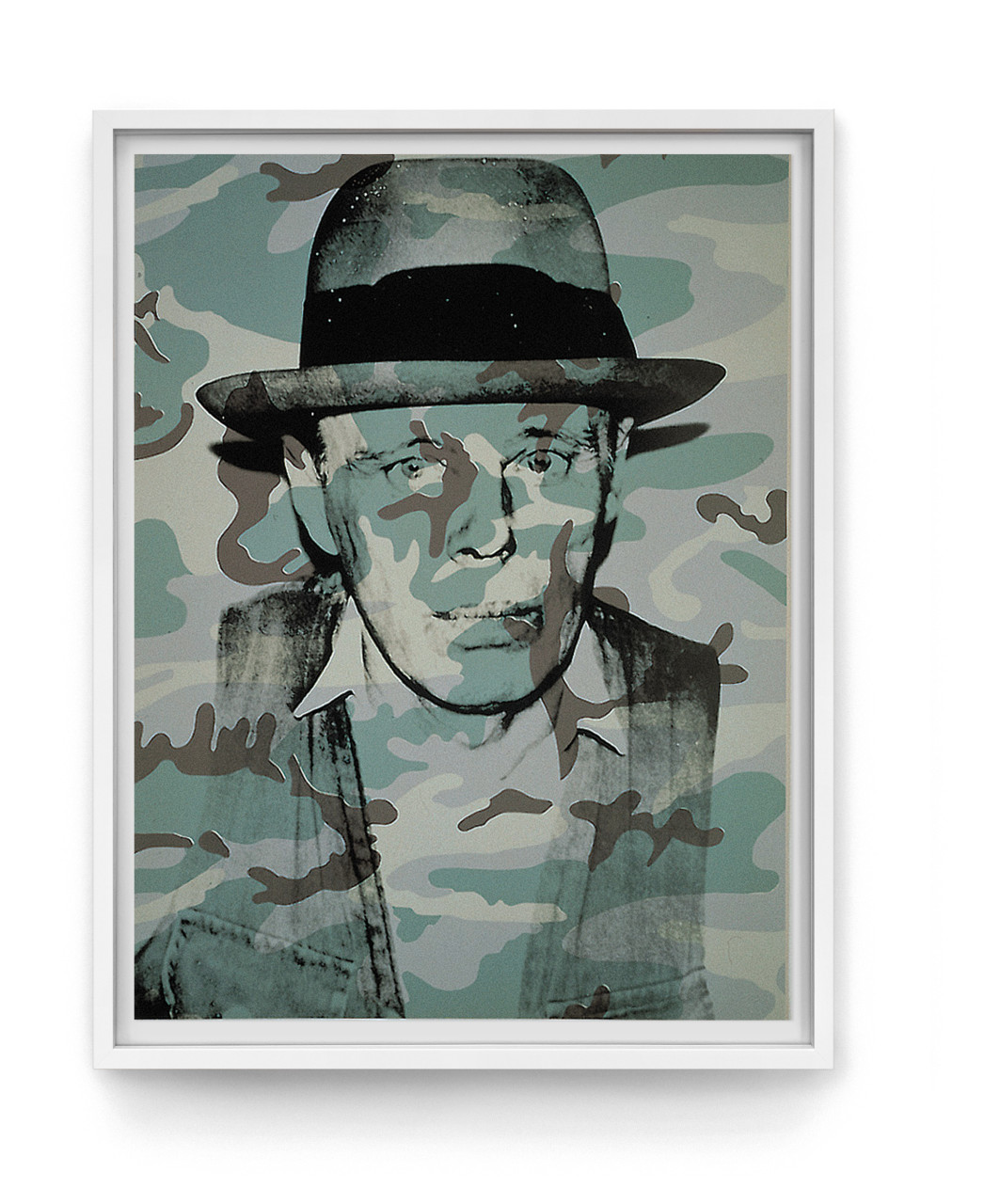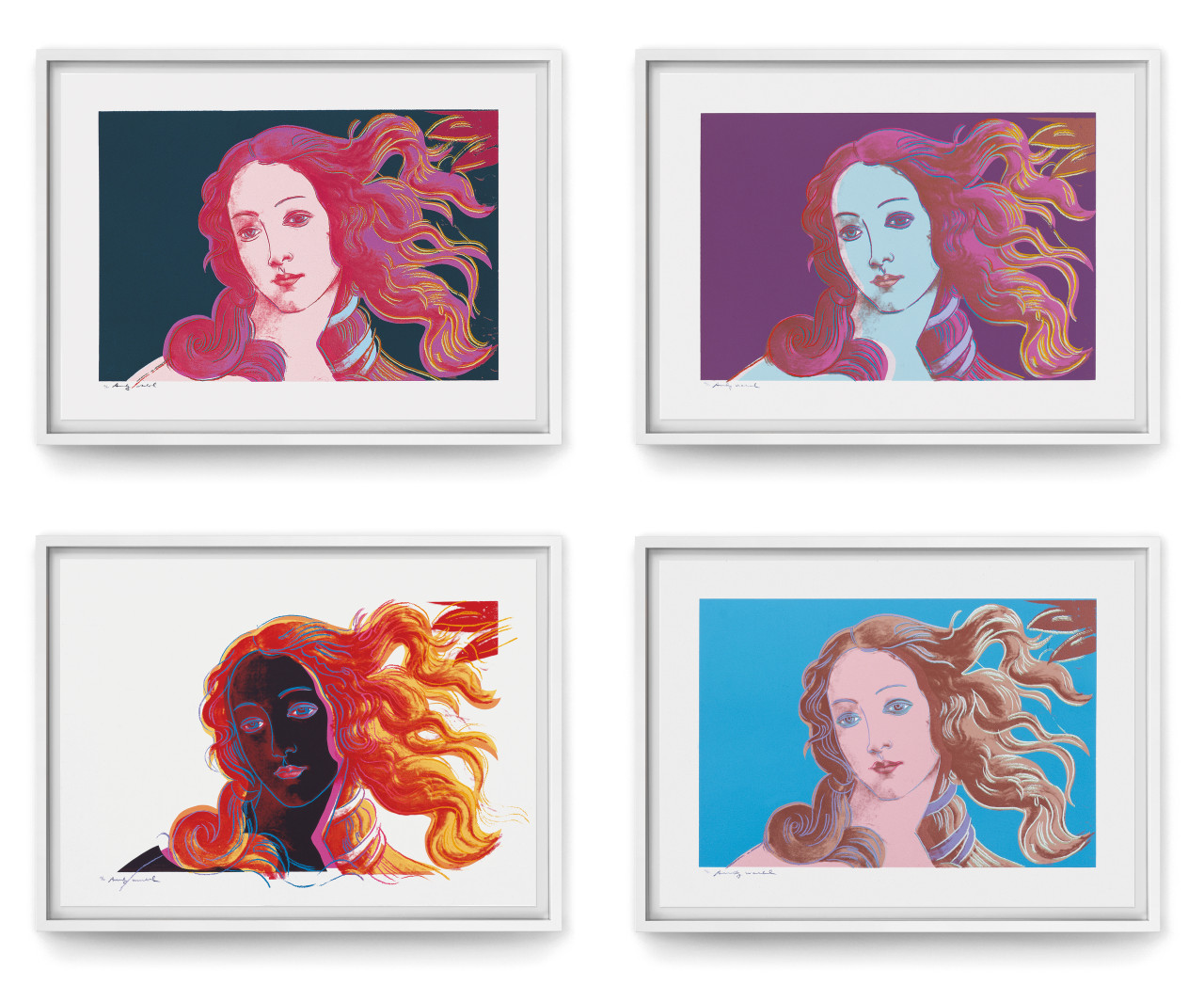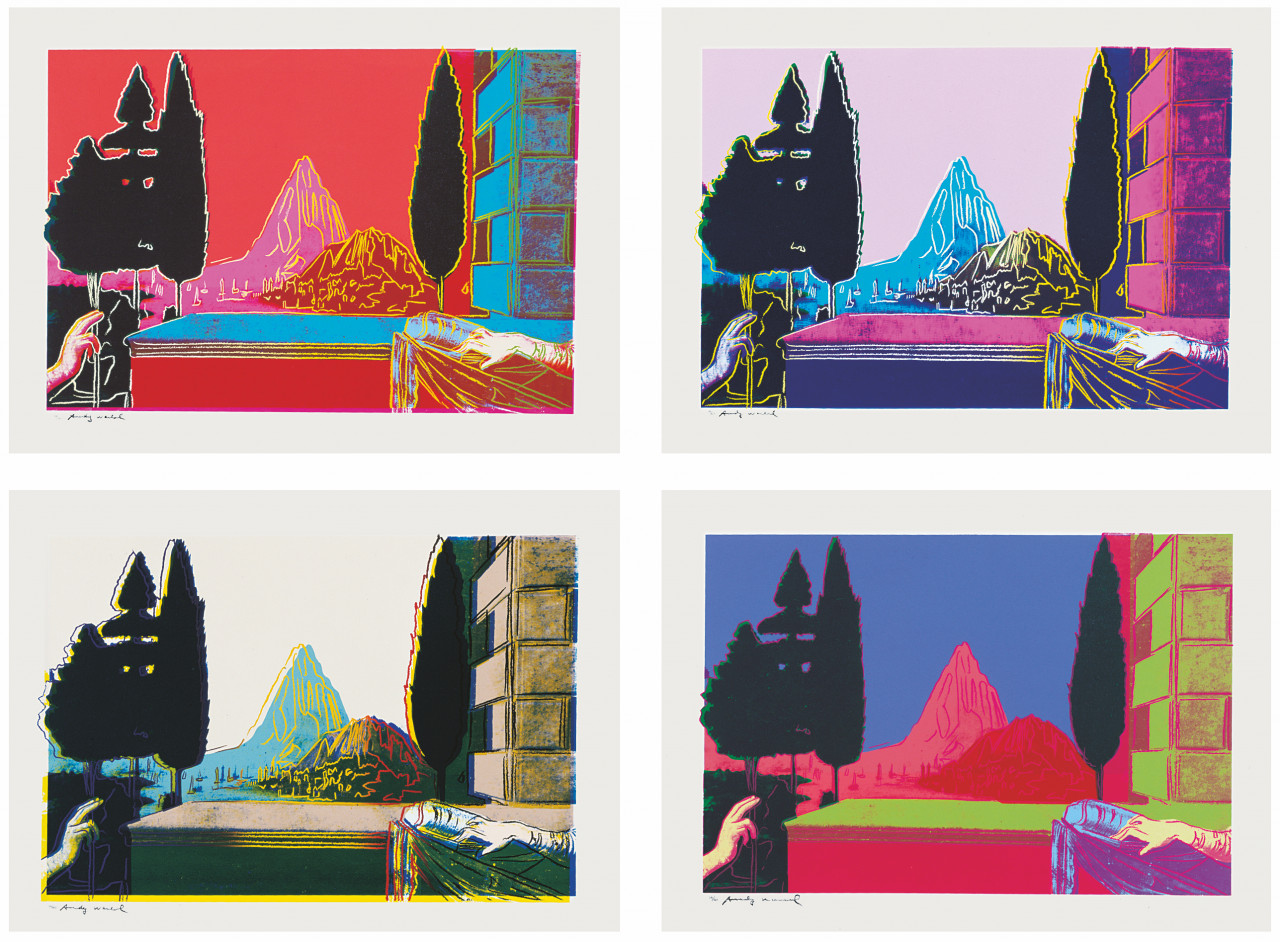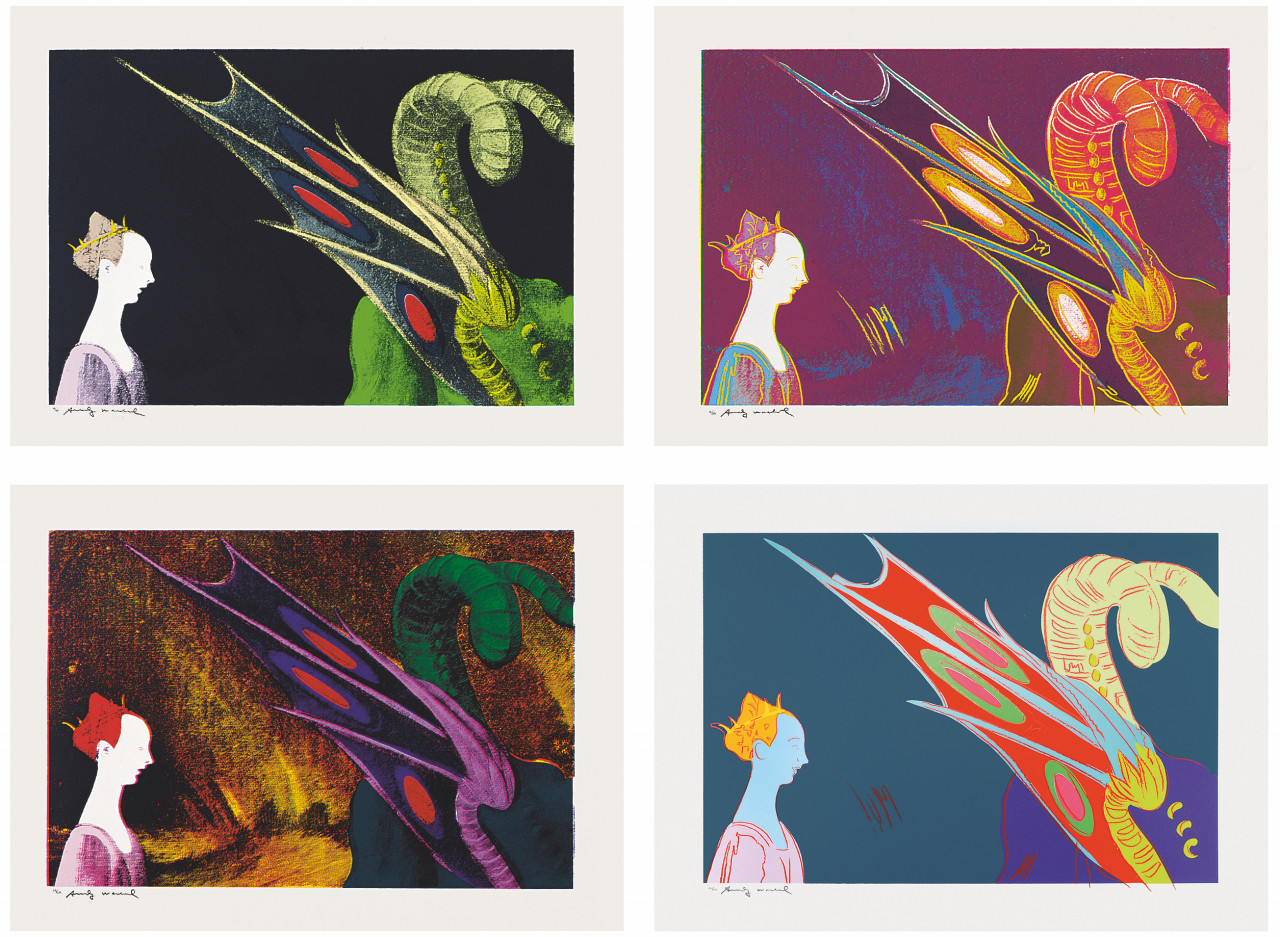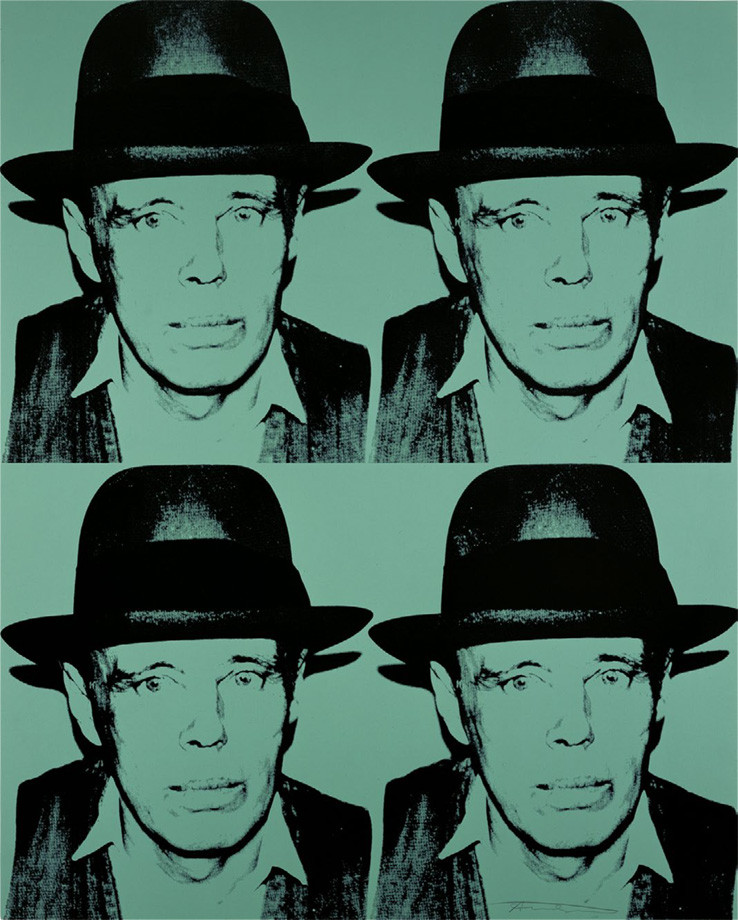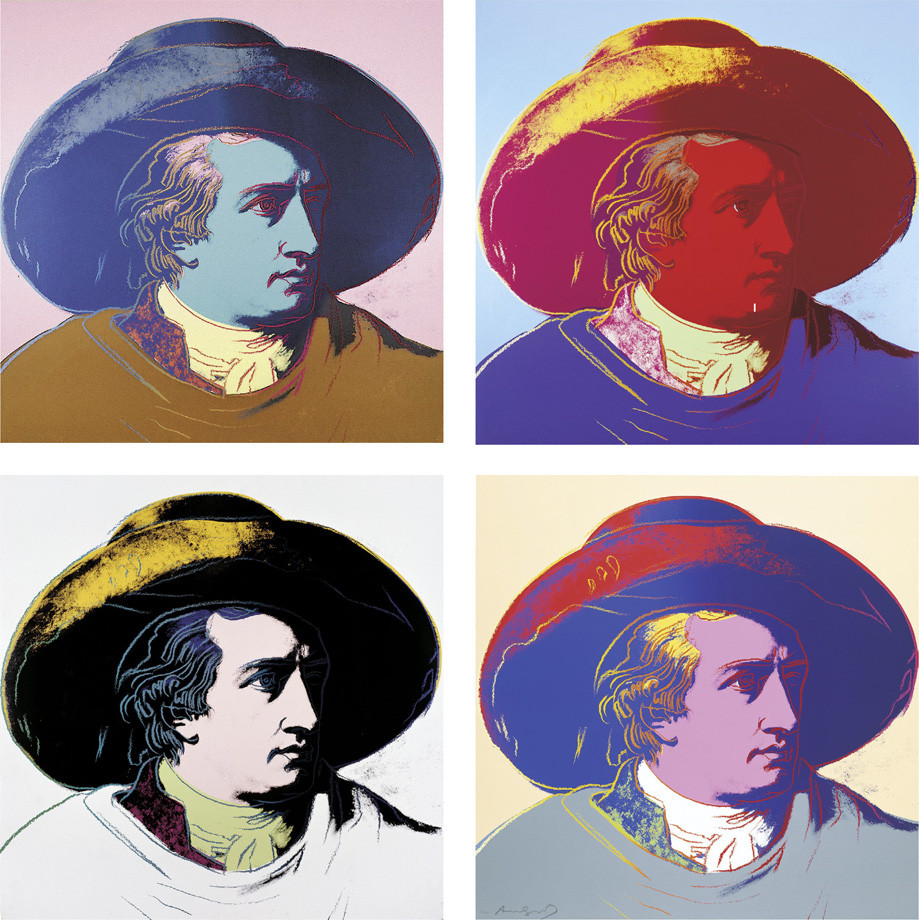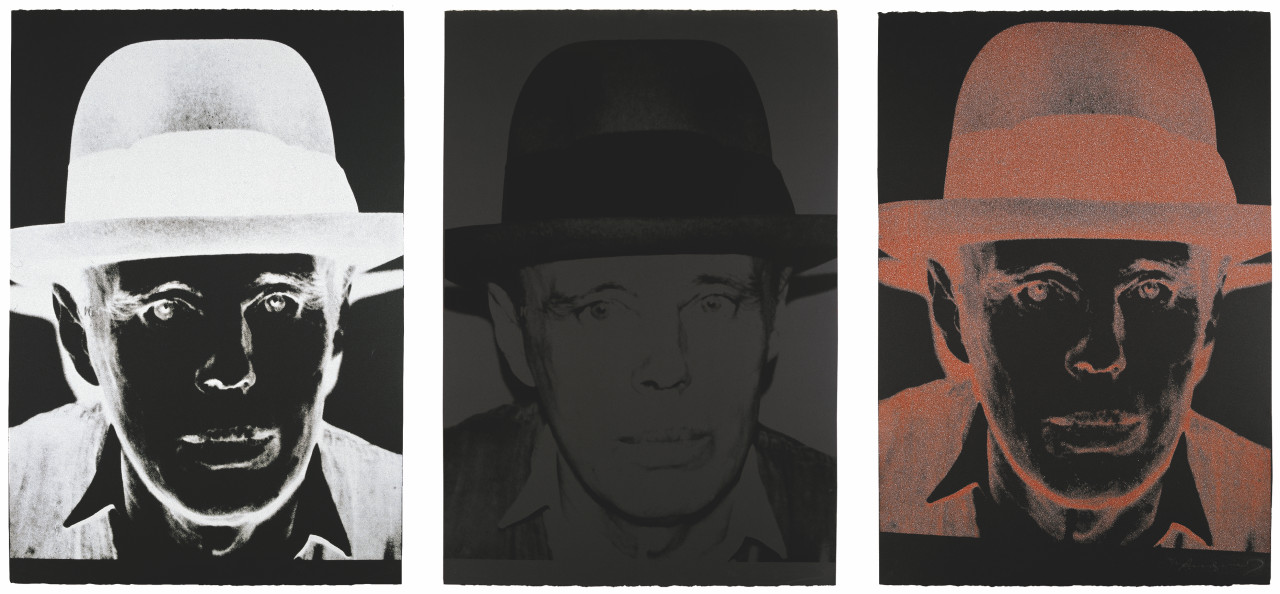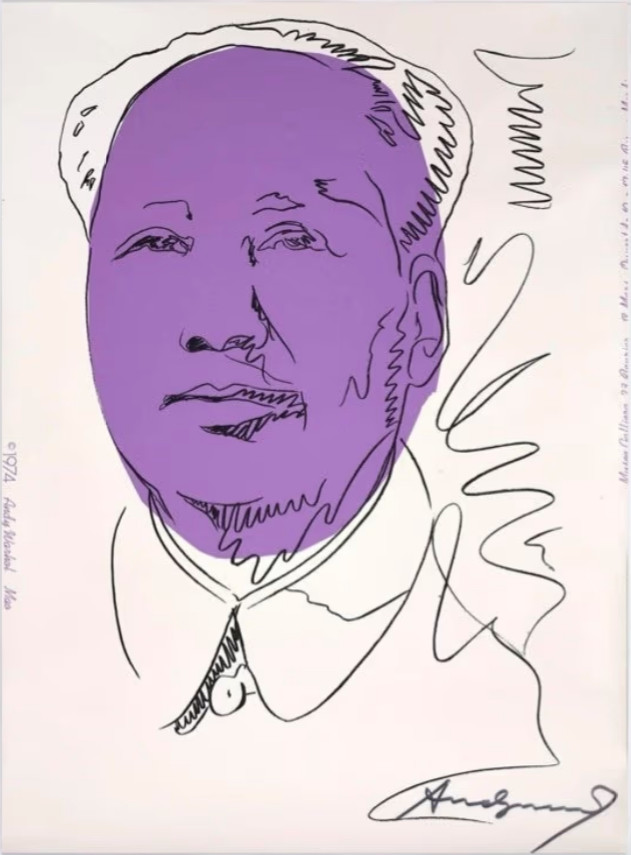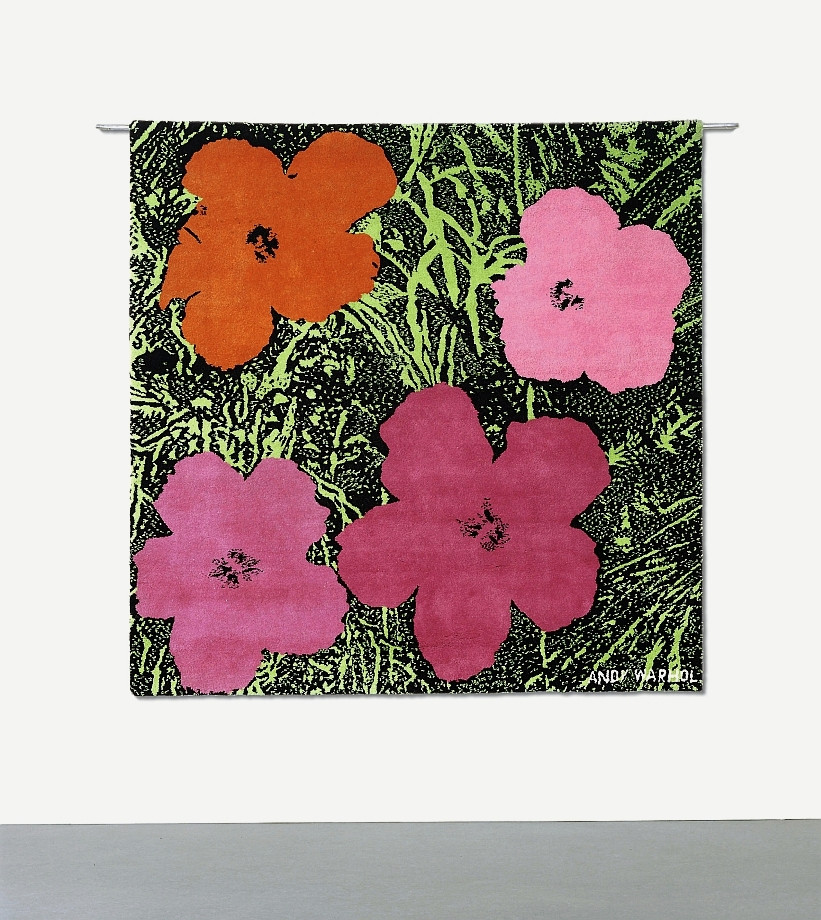Andy Warhol
Andy Warhol (1928-1987), born in Pittsburgh, Pennsylvania, lived and worked in New York. Very few artists achieve the level of recognition that secures for them a place in the public imagination. Andy Warhol is an artist who has. However, this very celebrity of Warhol's, his sheer, inescapable fame, has often disguised the fact that he was one of the most serious – and one of the most important – artists of the twentieth century. He quite simply changed how we all see the world around us. He also had an uncanny ability to select precise images that still have great resonance today. The straight-forward, shockingly simple images – usually culled from the pages of newspapers and magazines or discovered in photographs – found their way to a new authorship, becoming timeless, potent signs, that are indelible in the minds of most of us. Throughout the 1980s, Jörg Schellmann published several of Andy Warhol's editions and together with Frayda Feldman edited Warhol's print catalogue raisonné.
Andy Warhol Editions
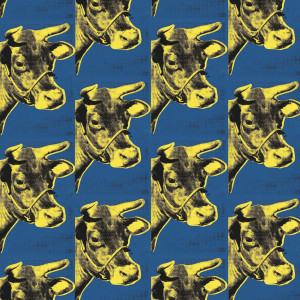
Cow
1971/1999

Neuschwanstein
1987

Joseph Beuys in Memoriam
1986
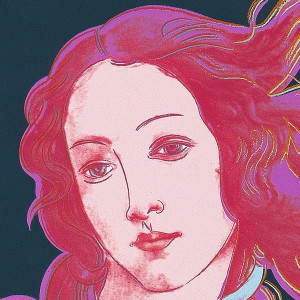
Sandro Botticelli, Birth of Venus, 1482
1984
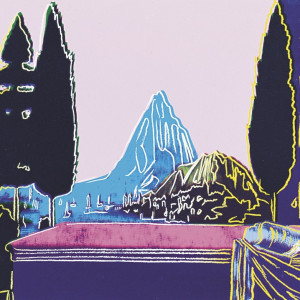
Leonardo da Vinci, The Annunciation, 1472
1984
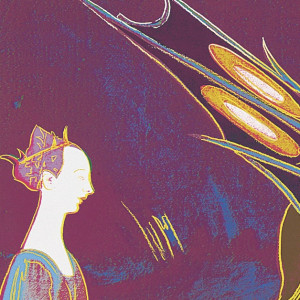
Paolo Uccello, St. George and the Dragon, 1460
1984
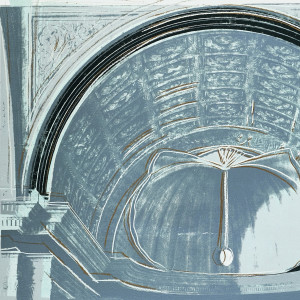
Piero della Francesca, Madonna del Duca da Montefeltro, circa 1472
1984
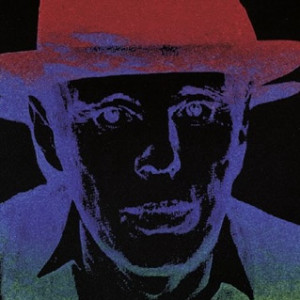
Joseph Beuys
1980-1983
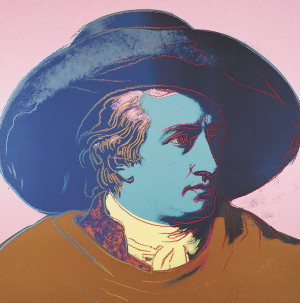
Goethe
1982
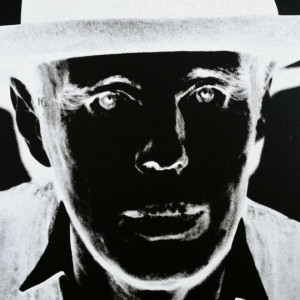
Joseph Beuys
1980
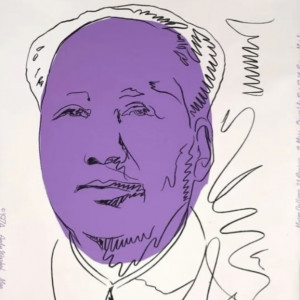
Mao
1974
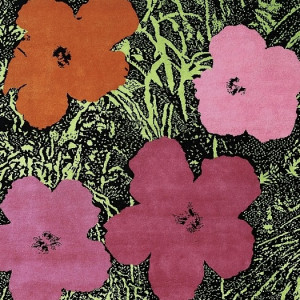
Flowers
1968
Andy Warhol
Cow
1971/1999
From Wall Works
Wall covered with wallpaper, originally with vintage silkscreen wallpaper (image: Feldman/Schellmann #12), as of 2008 with reprint wallpaper (F/S #12a). For temporary installation in museums or public exhibition spaces only, to be approved by the Andy Warhol Foundation for the Visual Arts, New York.
The first Cow wallpaper was installed at the Leo Castelli Gallery, New York in 1966. Three other color variations were produced, two in 1971 and one in 1976. All of them were published in unlimited editions, of which Warhol signed 100-150 prints in each variation. The Cow image was used as wallpaper in several museum shows.

Andy Warhol
Neuschwanstein
1987
Screenprint on rag paper, 85 x 60 cm (33½ x 23½ in). Edition of 100, signed and numbered.
F&S II.372
This edition was one of Andy Warhol’s last works. The titular 19th century castle in South Germany is known for its extravagance and romanticism and is said to have inspired the castle in Disney’s Sleeping Beauty. It was thus the perfect subject for the pop artist whose motifs would primarily draw from advertising, consumerism and pop culture, often blurring the lines between the real and the mythological.
Andy Warhol
Joseph Beuys in Memoriam
1986
From For Joseph Beuys
Silkscreen on rag paper, 80 x 60 cm (31½ x 23½ in). Edition of 90 + XXX, signed and numbered.
F&S II.371
This edition is part of the group portfolio For Joseph Beuys that Schellmann & Klüser published in 1986 to commemorate Beuys who had died the year prior. The portfolio included work by thirty artists, with Andy Warhol contributing a camouflage version of his iconic Beuys portrait from 1980.
The work is part of the collection of MoMA, New York.
Andy Warhol
Sandro Botticelli, Birth of Venus, 1482
1984
Part of "Details of Renaissance Paintings" suite of four portfolios containing four screenprints each.
Screenprint on Arches Watercolor (Cold Press) rag paper, 81 x 112 cm. Edition of 70, signed and numbered.
F&S II.316-319
Andy Warhol famously used silkscreen for both his editions and his unique works, often reproducing the same motif over and over again, thereby establishing serial printing and reproduction techniques in the visual arts and questioning the principle of originality. The resulting loss of a personal brushstroke is exemplary of the coolly distanced attitude of Pop artists and represents a striking contrast to the iconic Renaissance works he revisited for his Details of Renaissance Paintings suite.
By reimagining Botticelli’s Birth of Venus, Warhol bridges a dialogue between the high art of the Renaissance and the mass culture of the 20th century. Warhol’s focus on Venus, a symbol of idealised beauty, parallels contemporary society’s obsession with physical appearance and celebrity culture.
Andy Warhol
Leonardo da Vinci, The Annunciation, 1472
1984
Part of "Details of Renaissance Paintings" suite of four portfolios containing four screenprints each.
Screenprint on Arches Watercolor (Cold Press) rag paper, 81 x 112 cm. Edition of 60, signed and numbered.
F&S II.320-323
Andy Warhol famously used silkscreen for both his editions and his unique works, often reproducing the same motif over and over again, thereby establishing serial printing and reproduction techniques in the visual arts and questioning the principle of originality. The resulting loss of a personal brushstroke is exemplary of the coolly distanced attitude of Pop artists and represents a striking contrast to the iconic Renaissance works he revisited for his Details of Renaissance Paintings suite.
For this edition in particular, Andy Warhol reimagined Leonardo da Vinci's famous oil painting The Annunciation (c. 1472-1476) by showing only the hands of the angel Gabriel and Mary and the landscape behind them. The original, much more subtle tones are replaced by a vibrant color palette.
The edition Leonardo da Vinci, The Annunciation, 1472 is part of the collection of MoMA, New York.
Andy Warhol
Paolo Uccello, St. George and the Dragon, 1460
1984
Part of "Details of Renaissance Paintings" suite of four portfolios containing four screenprints each.
Screenprint on Arches Watercolor (Cold Press) rag paper, 81 x 112 cm. Edition of 50, signed and numbered.
F&S II.324-327
Andy Warhol famously used silkscreen for both his editions and his unique works, often reproducing the same motif over and over again, thereby establishing serial printing and reproduction techniques in the visual arts and questioning the principle of originality. The resulting loss of a personal brushstroke is exemplary of the coolly distanced attitude of Pop artists and represents a striking contrast to the iconic Renaissance works he revisited for his Details of Renaissance Paintings suite.
For this edition, Andy Warhol chose to tightly crop the original composition of Paolo Uccello’s St. George and the Dragon painting (ca. 1470) to only show the princess’s upper body and a small part of the dragon. This deliberate detachment removes the scene from its original religious and historical context, reducing it to only its visual components. This reflects the artist's fascination with repetition and reproduction, echoing that of consumer culture. Much like his Campbell’s Soup cans transform ordinary goods into art, his reinterpretation of Renaissance paintings recasts them as objects of modern consumption, blurring the lines between "high" and "low" art.
The edition Paolo Uccello, St. George and the Dragon, 1460 is part of the collection of MoMA, New York.
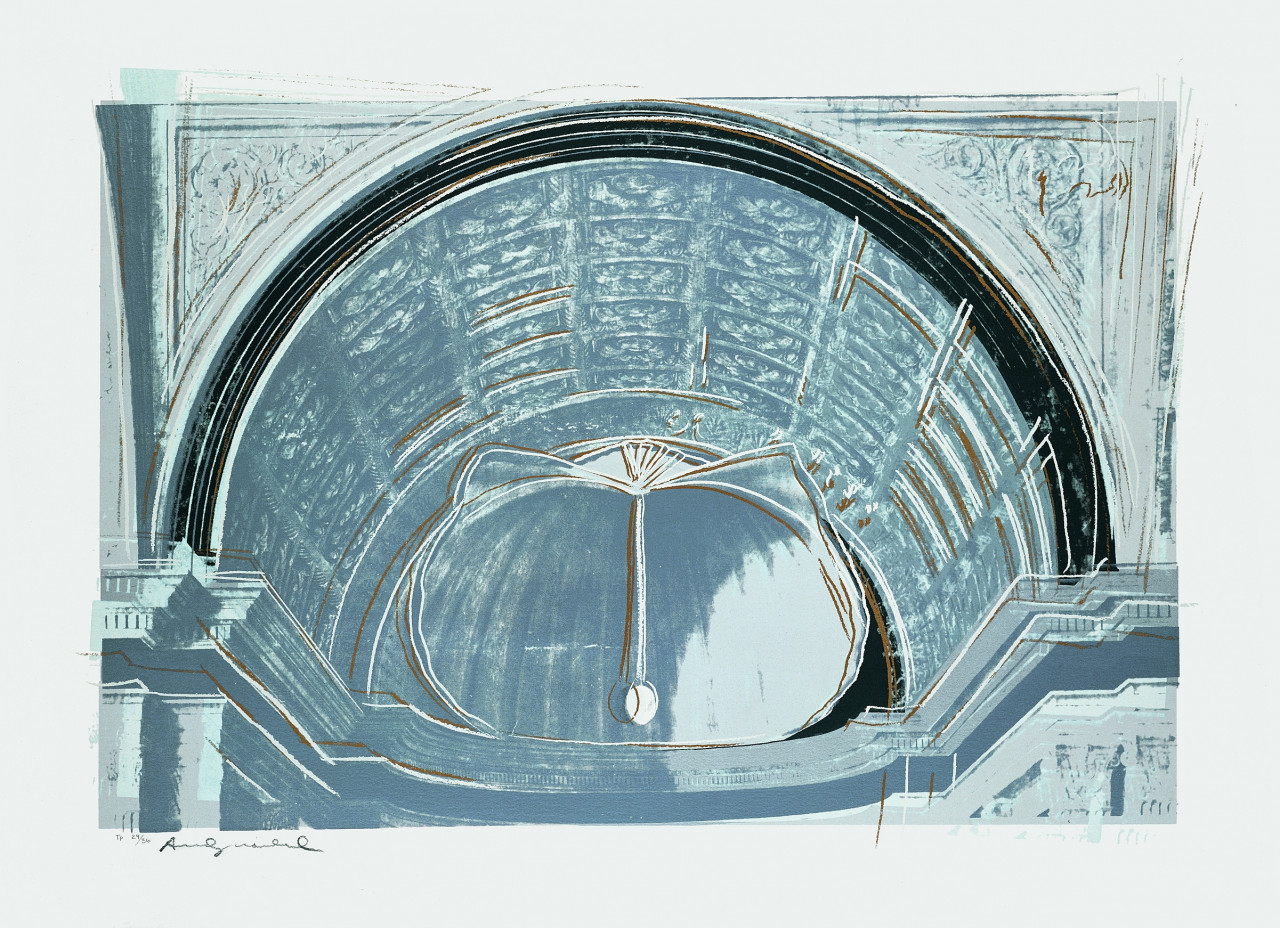
Andy Warhol
Piero della Francesca, Madonna del Duca da Montefeltro, circa 1472
1984
Part of "Details of Renaissance Paintings" suite
Screenprint on Arches Watercolor (Cold Press) rag paper, 81 x 112 cm. Edition: 36 trial proofs, each unique, signed and numbered.
F&S II.316A
Andy Warhol’s Madonna Del Duca Da Montefeltro offers a bold reinterpretation of Piero della Francesca’s Brera Madonna, isolating a single architectural detail – the semi-dome with a suspended ostrich egg. Originally part of a sacred conversation scene featuring the Virgin Mary, Child, saints, and patron Federico da Montefeltro, Warhol’s cropped version removes the figures entirely, shifting the focus to structure and symbolism. This transformation exemplifies his ability to reframe historical masterpieces through a Pop Art lens, turning a religious tableau into an exploration of form and modern visual language. Warhol's decision to omit the Virgin and Child could be seen as radical, even sacrilegious, yet it allows for a deeper appreciation of della Francesca’s meticulous use of perspective. Warhol’s vibrant coloration further distances the work from its Renaissance origins.
Unlike the other three motifs that are part of the Details of Renaissance Paintings suite, this edition is composed of 36 entirely unique trial proofs.
Andy Warhol
Joseph Beuys
1980-1983
Screenprint on Lenox Museum board in three states, state II and III have rayon flock, 101.5 x 81 cm. Edition: 150, state I numbered 101-150, state II numbered 51-100, state III numbered 1-50 (+ altogether 36 A.P. + 9 P.P.), each signed and numbered.
F&S II.242-244
In 1979, Andy Warhol and Joseph Beuys met in what was described by the press as a meeting between "two rival popes” as Andy Warhol was known as a chronicler of consumerism and celebrity, while Joseph Beuys was an earnest environmentalist, spiritualist and Green party founding member, and both artists were pivotal figures in contemporary art in their own way. After Andy Warhol had taken pictures of Beuys, Jörg Schellmann and Bernd Klüser (then collaborating as Schellmann & Klüser) as well as Italian gallerist Lucio Amelio all simultaneously suggested to Warhol that he use his photographs of Joseph Beuys as the basis for a new work. Ranging from colourful repetitions to subtle black-on-black images, Warhol’s portraits of Beuys not only signify the crossover of two icons of contemporary art but also serve as a visual testament to the deep mutual respect shared between these influential figures. This series of original artworks and editions, the latter of which were all published by Schellmann & Klüser, is widely considered his last great portrait series.
Andy Warhol
Goethe
1982
Portfolio of four screenprints on Lenox Museum board, 96.5 x 96.5 cm. Edition: 100, each signed and numbered.
F&S II.270-273
Based on the existing portrait of the influential German poet Johann Wolfgang von Goethe by painter Johann Tischbein from 1786/87, Andy Warhol’s Goethe series focusses on the literary figure’s head and removes him entirely from its pictorial context. With the help of the serial screen-printing process and the typically bright colours of Pop Art, Andy Warhol successfully catapulted Goethe into the 20th century and anchored him in the consciousness of broader sections of the population. At the same time, he seamlessly integrated the poet into his portrait gallery of prominent contemporaries such as Marilyn Monroe, Elvis Presley and Mao Zedong.
Andy Warhol
Joseph Beuys
1980
Portfolio of three screenprints on Arches Black, prints a (F&S II.245) and c (F&S II.247) with diamond dust, each 112 x 76 cm. Edition: 90 + 15 AP, signed and numbered.
F&S II.245-247
In 1979, Andy Warhol and Joseph Beuys met in what was described by the press as a meeting between "two rival popes” as Andy Warhol was known as a chronicler of consumerism and celebrity, while Joseph Beuys was an earnest environmentalist, spiritualist and Green party founding member, and both artists were pivotal figures in contemporary art in their own way. After Andy Warhol had taken pictures of Beuys, Jörg Schellmann and Bernd Klüser (then collaborating as Schellmann & Klüser) as well as Italian gallerist Lucio Amelio all simultaneously suggested to Warhol that he use his photographs of Joseph Beuys as the basis for a new work. Ranging from colourful repetitions to subtle black-on-black images, Warhol’s portraits of Beuys not only signify the crossover of two icons of contemporary art but also serve as a visual testament to the deep mutual respect shared between these influential figures. This series of original artworks and editions, the latter of which were all published by Schellmann & Klüser, is widely considered his last great portrait series.
Andy Warhol
Mao
1974
Screenprint on wallpaper, 102 x 75 cm (40¼ x 29½ in), approx. 100 signed from an unlimited edition.
F&S II.125A
By the time Andy Warhol transformed Mao Zedong into a Pop Art icon, the founder of the People’s Republic of China had already cemented his own legacy and reshaped the nation. However, the Cultural Revolution was nearing its end, and by the late 1970s, economic reforms were gradually steering China away from a command economy. Warhol’s silkscreen adaptation of Mao not only captured this turning point but also hinted at China’s eventual shift into Western markets. His choice to rework Mao’s widely recognized portrait created a striking synthesis between PRC propaganda and mainstream Pop Art. The complete Mao series that this edition is a part of serves as a powerful artistic reflection of the diplomatic shifts between the U.S. and China in the early 1970s. The transformation of Mao into a celebrity figure was highly controversial, as he discouraged media-driven fame. Yet, his image became inseparable from his leadership, evolving into a potent political and cultural symbol. Andy Warhol's reinterpretation went even further and turned the communist leader into a pop icon and a consumable object.
Andy Warhol
Flowers
1968
Wool and silk tapestry, 213 x 213 cm (83¾ x 83¾ in). Edition of 20, with artist’s name on front and © on verso.
This large-scale edition is part of Andy Warhol’s well-known Flowers series. The series marked a stark shift from Warhol’s previous work, the notorious Death and Disaster series, which included images like Birmingham Race Riot and Electric Chair. The idea for Flowers stemmed from a suggestion by Henry Geldzahler, then curator of American art at the Metropolitan Museum of Art. Geldzahler showed Warhol an issue of Modern Photography magazine, where he discovered a photograph of hibiscus flowers by Patricia Caulfield. Warhol created an abstract version of the image and shifted the flowers to create a square composition, thereby transforming the banal subject matter into a powerful pictorial concept.

